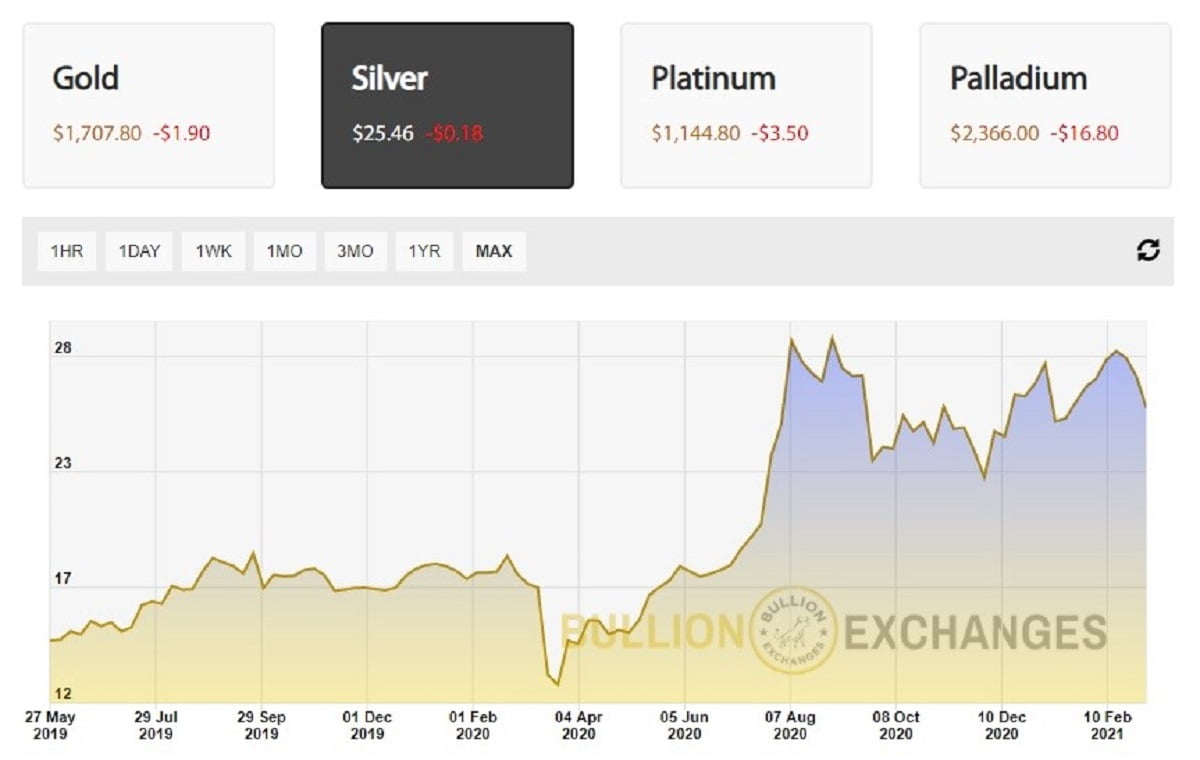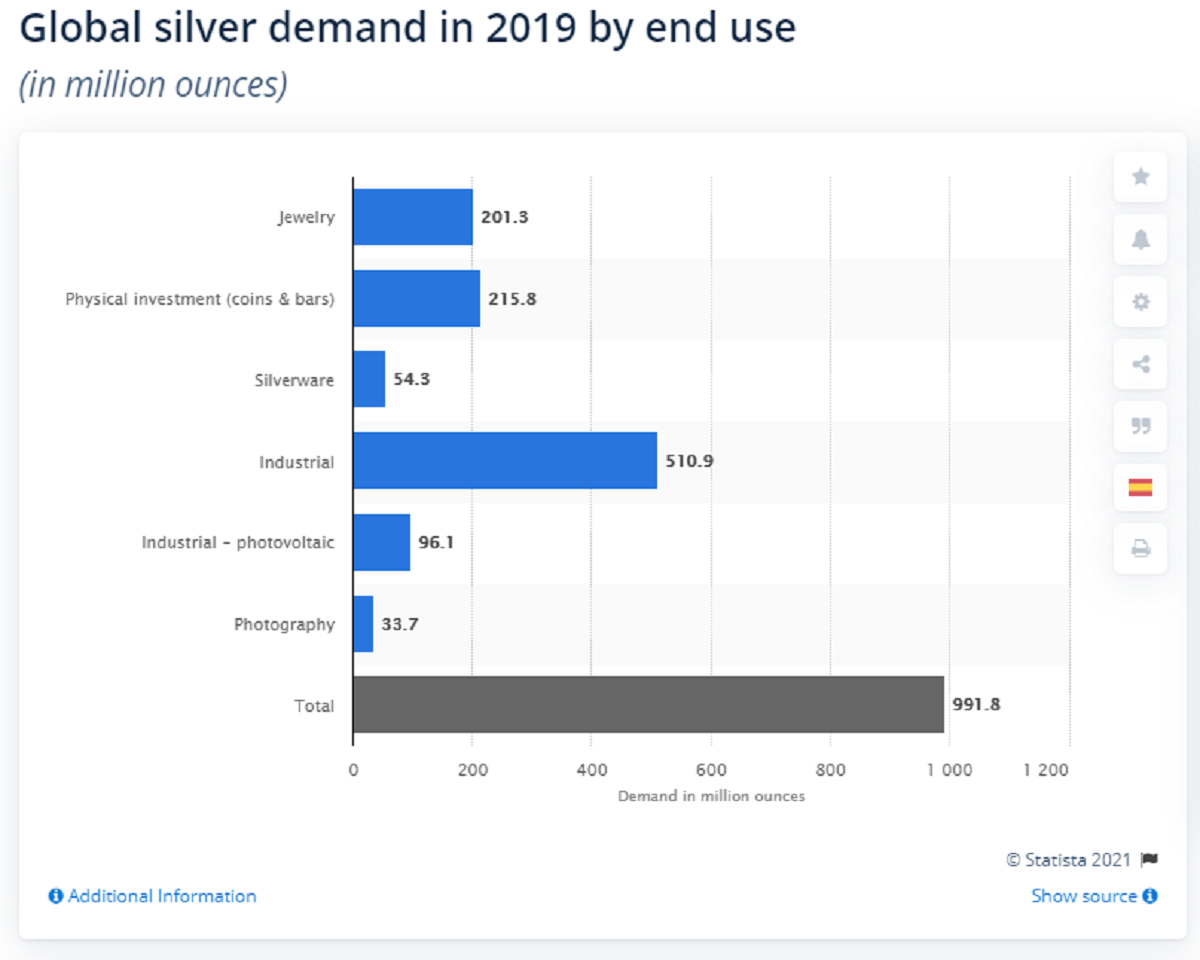Is silver just an outdated metal of the past? Although cryptos tend to take over the traditional investing scene, people might not be able to shake off silver, probably ever. This is because the industrial uses of silver remain important even today. Silver remains one of the best industrial metals on the planet. Demand for this metal has not fallen significantly, but its applications have shifted. So, what are the most common industrial uses of silver today, and how does this affect the spot price of silver?
Q4 2020 hedge fund letters, conferences and more
The Strange & Historic Industrial Uses of Silver
Silver is a precious metal that is strong, shiny, malleable, and ductile. These qualities are what make silver fantastic heat and electric conductors. On top of that, silver is sensitive to light and has antibacterial properties. For these reasons, the industrial uses of silver are pretty much limitless.
Uses of Silver: Photography
We all know that silver is traditionally used in silverware, jewelry, and fine art. However, there are some examples of silver uses that may surprise you. For instance, silver is a key component in x-ray technology!
Although this use has not changed and we still need silver for x-ray and radiographic photography, silver was once a key component for all cameras and film. Back then, silver nitrate was used to create light-sensitive halide crystals. The graphic arts, radiography, and heavy machinery were the top consumers of silver once. However, the photographic industry’s industrial use of silver dipped after 1999 and declined once digital cameras became more popular. Because the storage of media is now mostly digital, this sector no longer consumes as much silver as it once did. In fact, demand fell over 70% since 1999.
Uses of Silver: Photovoltaic Application
Sunlight has an interesting effect on silver. For example, silver nitrate in the sun changes color. Because of this reaction, not because of the heat, the solar panels took note of this useful fact. Today, we use it as a conductive paste for solar panels. The first application originated in 2000, and the industry took on about 1 million ounces of silver that year. That was a mere fraction of what the electronics industry used at that time. By 2008, the solar panel industry actually ballooned to use about 19 million ounces per year because of explosive photovoltaic demand.
This newer demand made up for the decline in the photography industry. In 2011, silver prices nearly doubled to almost $50 per ounce. These high prices actually nudged the solar panel industry off silver. Instead, the industry spent its time and resources on finding simpler ways to create solar panels with less silver in each panel. Today, almost 80% less silver is used in each panel, but rising demand for solar panels and green energy just may drastically impact the silver price. It is predicted that by 2024, about 2.5% of all homes in the US will have solar panels. Right now, the US has just over two million, and it is projected that we will hit three million in the US by the end of 2021.
Silver Uses in Medicine
Industrial use of silver in medicine does not sound too far-fetched considering we mentioned radiography earlier. However, silver actually has other applications because it is a metal with strong antibacterial properties and low toxicity to animal cells. Other, more expensive metals might share this quality, but silver does not harm animal cells because they have stronger cell walls than bacteria. Silver interrupts the ability of bacteria to form chemical bonds necessary for their survival.
Infusing silver in water actually creates a safer water source. This is why American pioneers moving out west threw a silver dollar into their baby’s bottles: it helped protect against the cold, flu, and dysentery. Today, we often use silver, not coins, in water purification for this reason.
This is not where silver ends in terms of health. Although antibiotics eventually took over as the standard treatment for infections, uses of silver in medicine have not ended entirely. We still use silver to treat ulcers, and silver can be found in bandages for burn victims as well as creams to help protect the skin from infection as it heals.
Apparently silver may also be able to help people fight off smoking addictions. Silver acetate is in gum, mouth sprays, and lozenges. When this is applied inside the mouth, smoking can cause an awful metallic taste in the mouth and deter people from smoking. On a more familar note, surgical masks, especially the Spectrashield respirator, blend copper and silver ions to eliminate certain bacteria.
You are more likely to find silver in nanotechnology and medical equipment today though. Using silver as an antimicrobial helps to start oxidation, which creates oxygen from air or water to destroy the cell wall membranes of single-cell bacteria. This reaction is specific to this process, so it is limited and cannot easily pollute the environment.
Modern Uses of Silver
Silver is the best conductor of electricity. If you were to compare silver to gold or copper on a scale of 0-100, silver is at 100, with copper at 97 and gold around 75.
Today, solar panels still rank as one of the top consumers of silver. However, other industries regularly and massively use silver, especially electronics. We rely on silver for solder and brazing alloys, batteries, dentistry (especially equipment), glass coatings, LED chips, medicine, nuclear reactors, photography, solar panels, RFID chips (for tracking shipments worldwide and more), semiconductors, touch screens, water purification, wood preservatives, and much more. More specifically, the Apollo lunar rover and Lunar Module both used a silver-zinc battery.
Thanks to silver, you are able to use a defroster in your car to melt ice and clear fogginess. You can also be thankful that silver makes RFID technology work. This is an identifying tag that you might see on your credit and debit cards if they have “chip technology.” Additionally, this chip can be found on passports, ear tags on agricultural livestock, implants in pets, and even perhaps as human microchips one day.
Modern technology relies far more on silver than people may think. Silver appears in electrical switches, in wiring, coats CDs and DVDs, in the ink on electronics, batteries, and LED lights. It is also ideal for aerospace applications for maglev trains and in electronics necessary for travel.
Why Does This Affect the Spot Price of Silver Today?
Technology relies on silver so much that industrial uses of silver are not merely going to end even if it gets more expensive. Even the solar panel industry worked around higher silver spot prices without removing it completely from panels. So, you will always be able to count on industrial silver demand regardless of the price of silver may be. Take a look at the industrial use of silver in 2019. This accounted for more than half the total silver demand in the world.
The largest consumers of silver include the US, Canada, China, India, Japan, South Korea, Germany, and Russia. Although silver demand from older industries has faded, they have been replaced by new ones. Because of silver’s unique properties, its industrial usage may never fade.
Learn more about the silver market today, whether you are a new investor or a seasoned one, from my interview with the subreddit WallStreetSilver here!







